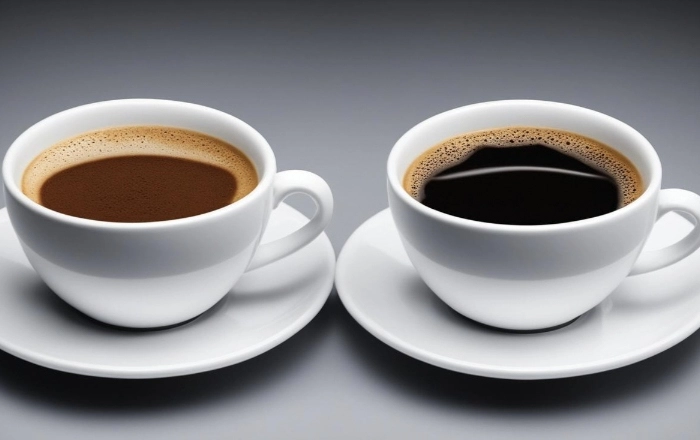When it comes to caffeine content, espresso and regular coffee often spark debates. Many assume espresso has more caffeine because of its strong taste, but the truth is more nuanced. This article breaks down the caffeine differences between espresso and coffee, covering brewing methods, serving sizes, and factors affecting caffeine levels.
Understanding Caffeine in Espresso and Coffee
Caffeine is a natural stimulant found in coffee beans. The amount in your cup depends on several factors, including bean type, roast level, and brewing technique.
Espresso is made by forcing hot water through finely-ground coffee under high pressure. This method produces a concentrated shot with a rich flavor. Regular coffee, on the other hand, is brewed by steeping coarser grounds in water, resulting in a milder but larger drink.
Caffeine Content per Serving
A single shot of espresso (about 1 oz or 30 ml) typically contains 63 mg of caffeine. A double shot has around 125 mg.
In comparison, an 8 oz (240 ml) cup of drip coffee averages 95 mg of caffeine, though this can range from 80 mg to 200 mg depending on the brew.
At first glance, coffee seems to have more caffeine. But when comparing ounce for ounce, espresso packs a stronger punch—about 63 mg per oz versus 12 mg per oz in drip coffee.
Factors Affecting Caffeine Levels
Coffee Bean Type
Robusta beans have nearly double the caffeine of Arabica beans. Many espressos use a blend of both, while specialty coffees often favor Arabica.
Roast Level
Dark roasts taste bolder but actually have slightly less caffeine than light roasts because longer roasting breaks down caffeine molecules.
Brewing Time and Method
- Espresso extracts caffeine quickly under high pressure (20-30 seconds).
- Drip coffee brews longer (4-5 minutes), extracting more caffeine overall.
- Cold brew, steeped for 12+ hours, can have even higher caffeine content.
Grind Size
- Finer grinds (espresso) increase surface area, leading to more efficient caffeine extraction.
- Coarser grinds (French press) result in slower extraction.
Espresso-Based Drinks vs. Regular Coffee
Many espresso drinks dilute the shot with milk or water, reducing caffeine per sip:
Latte (1 shot): ~63 mg
Americano (1 shot + water): ~63 mg
Cappuccino (1 shot + milk): ~63 mg
Meanwhile, a 16 oz (475 ml) drip coffee can easily reach 200 mg of caffeine, making it stronger in total volume.
Does Espresso Give a Stronger Caffeine Kick?
Even though espresso has more caffeine per ounce, its effects can feel different. Because it’s consumed quickly, the caffeine hits the bloodstream faster, leading to a sharper energy boost. Coffee, sipped over time, provides a more gradual release.
Health Considerations
Moderate caffeine intake (up to 400 mg per day) is generally safe for most adults. However:
- Espresso’s concentrated form may lead to quicker jitters or crashes.
- Coffee’s larger volume can cause dehydration if not balanced with water.
Physiological Effects: Why Espresso Feels Different
The experience goes beyond simple caffeine content:
Absorption Rate
Espresso’s concentrated form enters the bloodstream faster through the stomach lining, creating a quicker “hit.”
Chlorogenic Acids
These antioxidants in coffee slow caffeine absorption. Espresso has higher concentrations, potentially moderating the effect.
Volume Consumption
Most people drink espresso quickly but sip coffee over time, leading to different blood caffeine curves.
The Milk Factor
Lattes and cappuccinos contain protein that can slightly delay caffeine absorption compared to black coffee.
Conclusion
Espresso has more caffeine per ounce, but a standard cup of coffee usually delivers more overall. The choice depends on your preference—quick, intense energy (espresso) or a slower, prolonged boost (coffee).
Understanding these differences helps you pick the right drink for your needs. Whether you prefer a bold espresso shot or a comforting mug of coffee, both have their unique perks.
Would you like recommendations on brewing methods to control caffeine intake? Let us know in the comments!
Related topics:
Nespresso Cold Brew Vertuo: A Revolution in Coffee Enjoyment
How to Make Good Espresso with a Stovetop
How to Brew Espresso in Keurig


